The advent of free-form manufacturing technology in the early 2000s brought a burst of energy to spectacle lens design. This powerful new tool enabled lens designers to create a myriad of new multifocal and single vision products that expanded the boundaries of vision and changed the way we see.
But what’s next for free-form technology? Will spectacle lens designers keep refining existing designs? Are we reaching an endpoint, or is there a big leap forward coming soon?
20/20 posed these questions to some of the top executives in the spectacle lens field. you’ll find their thought provoking responses and insights on the following pages.
We also asked these lens experts to share their thoughts about bifocals and trifocals, the vision needs of the growing senior population, the myopia boom and how they see the smartglass market taking shape.
—Andrew Karp
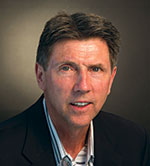 Randy Dannewitz
Randy DannewitzVice President of Strategic Development
VSP Optics Group
“The ability to improve the patient’s vision experience with digital free-form designs is still not fully maximized, so this is still an untapped opportunity. There is still a very high number of traditional lens product designs being dispensed to patients. Some of these designs were created decades ago and do not take advantage of the latest in lens design technology and innovation. Imagine if other industries were still using technology from the 1980s and 1990s.
“The key to providing a custom lens experience for each patient with digital free-form designs is the accuracy and level of measurement and fitting technology that is used. VSP Optics Group has been a pioneer in the market by offering the only all-digital free-form product portfolio with our Unity product line and by providing the latest in fitting and measuring technology with the development of our otto fitting app which is now being used in over 5,000 practices nationwide.
“Additionally, we collaborate on research regarding the ways we use our eyes as we navigate through our daily lives, the differences in types of visual impairments, demographics, lifestyle needs, etc. An all-digital lens portfolio provides patients and providers with economic and customization options to best fit the needs of every patient. By using an all-digital portfolio, we can continue to improve our designs every day based on the patient experience, so the big leap is here.”
 David Rips
David RipsPresident and CEO, Younger Optics
“Of course, lens designers keep refining existing designs, trying to make them better and better, but the big difference with free-form is that the designer has two surfaces to work with rather than just one. This provides a lot more options, such as our dual-sided progressive Camber. Probably the big breakthroughs will happen in the area of specific progressives for specific functions and individualized for specific people.”
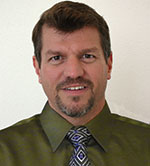 Pete Hanlin, LDO
Pete Hanlin, LDODirector of Technical Marketing, Essilor of America
“As long as research into human vision continues, there will always be room to refine the design of progressive lenses. The manufacturing method is merely a tool to apply refinements. That said, digital surfacing does allow designers the ability to deliver design improvements to either or both sides of a lens, making it possible to create optical solutions that did not exist before (e.g., the reduction of swim by controlling magnification shifts across the lens).”
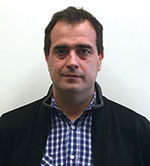 Daniel Crespo
Daniel CrespoIOT
“For the current generation of free-form technology, where a lens is made out of a solid homogeneous material and only one side is free-form, we have reached a point where many lens designs are just as good as they can be; they are in a certain sense mathematically perfect.
“But the most interesting fact is that each particular wearer will still prefer certain lens designs over others. Each design represents a different balance of lens characteristics. The challenge is not so much improving individual lens designs, but creating a system that can automatically select the best lens design for each wearer. For this purpose, lens calculation systems must become tightly integrated with different systems and data sources at the lab and retail level that include patient history and lifestyle, as well as adaptation and satisfaction data. Using artificial intelligence algorithms, similar to those that are commonly used in other industries, it will be possible to calculate the lens that will most likely yield the highest satisfaction for each specific wearer. The more data that is available about present and past jobs for the whole community of wearers, the better the lens calculation can be. In our view, lens calculation systems are bound to become the core of future intelligent lens recommendation systems. We are certainly working in that direction.
“Other options that are more and more interesting are lenses for specific activities or environments, like office lenses which are gaining wider acceptance, and outdoor designs or designs for specific sports. We believe that we will see more and more second and third pairs of specialty lenses being widely adopted.
“And, in the high-performance segment we also believe that we will see more lenses being made with special lens geometries, like the Camber lens that IOT and Younger have co-developed. These can have true advantages over full backside designs because they incorporate additional degrees of freedom in the design.”
 Anne-Marie Lahr, OD
Anne-Marie Lahr, ODDirector of Education, Hoya Vision Care
“We are only limited by our own experience, and there is so much we do not know about the brain. Future research about the brain, perception and how we relate to it will shape lens design that will definitely make leaps forward. Our newest patented technology, Binocular Harmonization Technology, is groundbreaking in the way it corrects for anisometropic prescriptions. Seventy-three percent of spectacle lens wearers have a difference of 0.25D or greater between the two eyes. The differing amounts of prism experienced when the wearer lowers their gaze into the corridor is a likely cause of dissatisfaction and discomfort experienced by progressive lens wearers. We are now able to equalize the prismatic effect of differing distance prescriptions and provide a binocular solution—free-form surfacing makes this possible. The ultimate goal of a lens designer is to make the wearer forget they are wearing a lens at all, and there are infinite numbers of directions the pursuit of this goal can take us in.”
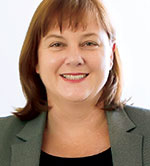 Karen Roberts
Karen RobertsVice President, Global Business Solutions/Customer Enablement,
Carl Zeiss Vision International
“There is still scope for continuing to refine designs to better customize lenses to suit individual needs with increased emphasis on market segmentation and lifestyle diversity. This approach is resulting in more sophisticated design solutions for driving, sporting needs, office lenses, digital device use, etc., and even more sophisticated solutions overall when these customized designs are combined with other features such as customized filters. Designers are also always striving for designs that achieve a balance between optical and cosmetic criteria.
“To fully benefit from these trends, a highly flexible calculation engine and a deep understanding on how people see are critical to fully leverage the benefits of using flexible manufacturing platforms like free-form (and in the future, 3D printing).
“There may not be big leaps coming soon but there are still many other challenges for lens designers in better understanding how the brain works in different viewing situations and whether designs can be enhanced to create a ‘feels like’ experience that goes beyond the physical measures we rely on in the industry today.
“Many of the drivers of a better experience and better spectacle solution are dependent on the ability to accurately and easily measure individual prescription, wearing conditions, visual behavior, lifestyle needs, and three-dimensional analysis of head and face proportions. Many of the new measurement devices can still transform our industry in this regard.”
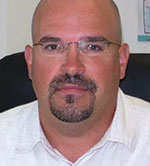 Michael J. Rybacki
Michael J. RybackiSenior Vice President, Sales and Marketing
Seiko Optical Products of America
“The next step for free-form is real 3D facial optical design to customize both the frame and lens. This technology is evident with Hoya’s new Yuniku. The Yuniku technology is most unique because it takes a purely vision-centric approach, which allows us the ability to not compromise on the visual performance, frame fit or aesthetics. This means we can deliver a unified processing system by combining all three of these elements for a perfect outcome.”
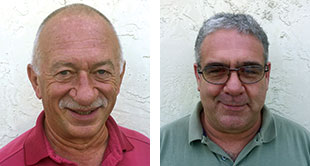 Michael Walach (left)
Michael Walach (left)President, Quest Vision Care Specialty Lab
Yoav Caplan (right)
Director of Marketing and Professional Relations, Quest Vision Concepts
“At this time, spectacle lens designers have achieved a much higher level of lens design sophistication than the rest of our industry is ready to utilize to the full benefit of the patient. In our opinion, the main stumbling block is the lack of functional measuring or verification instruments in order for the ECP to be able to verify that the prescription has been filed in compliance with the patient prescription requirements from the patient vision point of view.
“For conventional and non-compensated free-form lenses, the ECP knows how to inspect and verify the lenses for compliance with the patient Rx. When the lenses are individually optimized designs, the standard lens inspection process is no longer viable. The lab provides the ECP with values to be measured at DRP, PRP and NRP, but those values are calculated substitute values for the sole purpose of lensmeter verification.
“The problem the ECP is faced with is that there are no functional and effective inspection tools to evaluate the given parameters of the individually optimized lens from the patient’s vision point of view. In effect, we are asking the ECP to blindly accept and trust that there is zero chance of error in the lens design, complex lens calculations, data input, equipment calibration or malfunction during the entire lens production process. To ask that of the ECP who has built a successful practice based on accepting total responsibility for the quality of the prescription eyeglasses dispensed to the patient does not appear to be quite reasonable. Therefore, before the lens designers venture into even more sophisticated lens designs, we have to wait for someone in the inspection instrument field to come up with such a tool.”
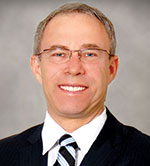 Raanan Naftalovich
Raanan NaftalovichPresident, Shamir Insight
“As far as lens designs go, Shamir believes there is definitely an opportunity to improve and provide more advanced and uniquely customized solutions for the patient. Getting to the next ‘leap’ forward may involve changing the current prescribing, presentation and fitting habits. The next generation of progressive lenses will dial in new, complex and dynamic personal data.
“The continual advancement of specialized solutions will require enhanced patient information. Utilizing advanced measuring devices such as the Spark Mi will be expected as customized free-form lenses become more the norm. Shamir has already seen the incorporation of as-worn measurements into lens designs, and as technology develops, we will see the opportunity to specialize designs based on additional parameters.”
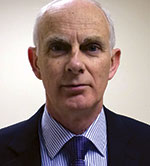 Trevor Steele
Trevor SteeleTechnical Director, Crossbows Optical
“Spectacle lens designers will continue to develop and refine existing designs as new production techniques become available and as they continue to develop a better understanding of how spectacle lenses work. In recent times, this has led to increased sophistication and better performance from lens designs, through such technologies as waveform analysis and the ability to produce more individualized designs. There will almost certainly be a big leap forward in the future at some point, but it is not certain when that will be and what form it will take. 3D printing is one technology which could lead to such a breakthrough.”
Daniel Crespo
“At IOT we are not involved with bifocals or trifocals, only marginally through some digital "bifocal" designs. What we hear from customers is that it is hard to get an experienced bifocal user to switch to a progressive lens. Very often they just prefer their bifocals. But we also hear that new presbyopes are almost always adopting progressives instead of bifocals.”
Randy Dannewitz
“Bifocal and trifocal sales have been declining each year. This is primarily due to the improvement of progressive lens designs from the use of digital free-form technologies that provide the patient with a more customized vision experience that allows for easier adaptation. We have been a leader in this area by providing the only all-digital free-form design portfolio with our Unity product line which utilizes the latest in design and innovation technologies. As this improved patient experience expands in the market, both bifocals and trifocals will continue to decline in sales. Our industry holds the power to introduce emerging presbyopes to the significant benefit of today’s digital progressive lens designs; we can and should commit to educating patients on the vast technology and aesthetic improvements now available to them with these advancements.”
Pete Hanlin
“The U.S. is one of the few developed markets in the world with a sizable percentage of lined multifocal wearers. In fact, each year over 100,000 new American presbyopes are placed in lined multifocals (based on sales of +1.00, +1.25 add multifocal lenses). In some respects, the U.S. ophthalmic market can move at a glacial pace (it took 20 years to transition from glass to 1.50), and eradication of lined multifocals continues to progress (pun intended) slowly.”
Anne-Marie Lahr, OD
“New and innovative technology in lens design will improve the experience of PAL lenses as it has been doing since PALs first came to market. We have already witnessed enormous improvements in both manufacturing and design the past 20 years. While the standard bifocal and trifocal will continue to be marginalized, it will remain an option over the next five to 10 years as adoption and newer technologies takes time. There will also be some task or lifestyle-related uses for lined multifocals. Hoya currently produces ST28 IQ, which combines the familiar optics of a lined bifocal with a free-form optimized back surface that improves the basic optical experience, particularly for patients with astigmatism.”
Raanan Naftalovich
“We will see a clear shift away from bifocals and trifocals in the next five to 10 years. In the U.S., bifocals and trifocals are still being utilized today due to habits and presentation traditions. Baby Boomers are demanding better vision and aesthetics which continues to push the release of products like Shamir’s Workspace, InTouch and Duo, which are unique and attractive designs that outperform the traditional lined alternatives.
“Millennials have been a big topic over the past few years because their age group has surpassed the “baby boomers” as the largest generation. Shamir understands that the “Millennial Mindset” is viewed as a cross-generational mentality. That being said, Gen-Xers and Baby Boomers are using technology such as smartphones, Fitbits and being active on social media; it is because of the acceptance of technology within these groups that Shamir believes we will see a decline in the use of bifocals and trifocals as these consumers continue to embrace new technologies.”
David Rips
“Bifocals and trifocals will remain a viable option since they do provide an optically important function. Remember, all progressives go from one power to another and segmented lenses do it in the fastest possible way, by compressing all of the change in a line, rather than spreading the change. While an excellent case can be made for progressives, and they are growing, an optical case can also be made for segmented lenses. It is a big world out there, and different things work for different people.”
Karen Roberts
“Bifocals/trifocals continue to be a significant segment in the marketplace, and we expect they will continue to be a viable option for existing wearers in years to come, certainly in the next five to 10 years. Since new presbyopes are generally prescribed a progressive solution, then the traditional bifocal/trifocal products are going to diminish over time, except perhaps in certain specialty/occupation applications.
“There is an emerging category of free-form progressive “bifocals,” which are trying to cater to the existing bifocal wearers with the best of both worlds, but cost continues to be a strong motivator for existing wearers to continue using the conventional products.”
Michael J. Rybacki
“Yes, bifocal and trifocals should be extinct in the near future. Hoya/Seiko does not manufacture them anymore, we only source them. Hopefully others will do the same soon. It is a classic case of supply and demand.
“For this to happen, ECPs will also need to do their part to steer patients away from such products. If supply is also reduced by manufacturers, then prices should go up over time while some demand remains. However, I think the reality is there will be free-form PALs (full back surface) private label options that can be produced at the same or even for less starting from next year when all the basic back surface patents are expired. When this happens, I think there will be options available to source basic free-form PALs in the lowest of non-PAL multifocal price points. This should also start the trend to make conventional PALs extinct as well."
Trevor Steele
“Despite the popularity of progressive designs, there are still very significant numbers of spectacle wearers who prefer bifocal or trifocal lenses. This can be for a number of reasons such as cost, because bifocals are cheaper. Lens performance is also a factor. For some uses, bifocals or trifocals can be better than progressives.
“For these reasons I believe that bifocals will not die out in the next five to ten years. Furthermore Crossbows Optical are launching their “Digital Bigressive,” which is effectively a digital bifocal offering the same reading and distance features of a traditional bifocal with the added advantage of having the bifocal on the back surface of the lens. Another advantage of this type of lens for the laboratory is that it further reduces the necessity of semi-finished inventory from the laboratory, as the lens can be manufactured from a semi-finished sphere.”
Michael Walach and Yoav Caplan
“Bifocal lenses are an effective solution for emerging presbyopes that need distance and near vision correction only because they still have enough reserve accommodation for intermediate vision.
“For those patients, trifocals and progressive lenses are not only not needed, but are counterproductive since they further induce presbyopia. In effect, stopping the exercise of the ciliary mussels will result in accelerated loss of accommodation. The analogy would be someone with a slight limp. You would start them with a cane, not a wheelchair.
“In addition, with the proliferation of handheld devices the reading distance habits are shorter, resulting in the need of presbyopic correction at an earlier age to include Generation X and Millennials. Therefore bifocals as a lens correction solution are needed and are here to stay, and sophisticated new bifocal lens designs will be emerging utilizing free-form technology.”
Daniel Crespo
“It's a fact that the senior population is growing, and that means an ever increasing prevalence of presbyopia. Of course, there are other vision-related problems as a consequence of the increased senior population, but from the point of view of spectacle lens design, the main consideration is presbyopia.
“Let's also take into account that this senior population is more and more active and demands high visual quality in their everyday life and for a very broad range of activities. We believe that having more and more types of lenses for presbyopes, lenses that are specific to different activities and lifestyles is the best way to meet the demands of this growing population.”
Randy Dannewitz
“Once again, the use of digital free-form designs and the latest in fitting and measuring technology is the key to maximizing each patient’s vision experience, no matter the age. Beyond lens designs, another area of opportunity is to gain a better understanding of how we might improve the visual experience for seniors through selective attenuation of light; this evolves the benefit of lens designs beyond the correction of refractive error into a new realm of visual performance enhancement, similar to the process that VSP Optics group has been pioneering with the development of specialty coatings and materials like TechShield Blue.”
Pete Hanlin
“Today's seniors spend greater amounts of time looking at small print on near objects, and progressive lenses therefore need to provide sharper images, especially at near. Design technologies which reduce higher order aberrations (which reduce contrast and image sharpness) provide a better solution for the modern senior.”
Anne-Marie Lahr, OD
“According to census projection, by 2050 the 65-plus population will double from 2010. Independence and maintaining independence is a central theme for seniors to maintain their quality of life.
“We are developing materials and designs to improve contrast which assists the elderly as they lose contrast and depth perception with age. We also need to look at overexposure to light and AMD. There are more materials and treatments improving contrast (like our Recharge) and offering a higher level of blue light filtration in order to offer as much protection against HEVL that potentially damages the macula, contribute to ocular discomfort and negatively affects sleep patterns and circadian rhythms.
“Part of senior independence is mobility and in large part the ability to continue to drive a car. We are also engineering materials and treatments for better contrast and creating designs targeted to driving. While these types of specialized lenses can benefit everyone, they are particularly beneficial for the aging population.”
Raanan Naftalovich
“It’s important that we avoid segmenting our customers into age groups, such as ‘seniors.’ At the age of 55, you are considered a “senior,” and we believe that most people who fall within this age bracket would cringe if someone referred to them as a ‘senior citizen,’ specifically because of the connotation attached to it.
“Today a 55-plus-year-old is active in various aspects. Rather than approaching this group from an age-related standpoint, Shamir believes it is more beneficial to interact with them from an ‘activity’ perspective, much like it is with any age group. They are working, active with hobbies, exercising outdoors and spending time on smartphones or tablets. Shamir’s InTouch, designed for the smartphone user, has proven successful with this segment of our population.”
David Rips
“An aging population means more people wearing more lenses, so there will be a greater demand for some conditions that currently cannot be addressed because the demand is too low. As the population ages throughout the world, niche lenses will have higher demand.”
Karen Roberts
“New measurement devices such as 3D centration devices, gaze and visual tracking systems allow a more precise and detailed analysis of the wearing conditions for spectacle lenses. These devices will generally allow more accurate customization of lens designs for individual needs, which is important for an aging population whose accommodation and visual agility may be diminishing.
“Vision research continues to improve the lens designers’ understanding of potential sensitivities in lens designs that may be more problematic for an aging wearer.”
Michael J. Rybacki
“For the most part with free-form it is much easier to design specialty lenses not only for specific age groups—which is already happening—but also for specific needs. In general, more options can be added for seniors with free-form. For example, it’s much easier to make a lens with a +4.00 add or higher.”
Trevor Steele
“Spectacle lenses for the growing senior population are evolving to provide better solutions for presbyopia. It is clear that one lens design cannot be optimal for all uses, and so designs are evolving for general purpose use, sports use, office use and wherever a need is discovered for special purpose lenses.
“In addition, the performance of all design types are being continually improved as designers gain a better understanding of patient requirements and of lens performance. This can be seen in the increasing sophistication and variety of the progressive designs available in the marketplace. This needs to be augmented by better training of the retail outlets and ECPs so that the full potential of the designs can be realized.”
Michael Walach and Yoav Caplan
“The seniors of today live longer, are healthier and more active then prior generations. In addition, today’s seniors have more time and money to spend on leisure activities. Lens designers will have to design various leisure and task-specific lenses in order to accommodate for those needs, i.e., golfing, tennis, cycling, scale modeling, art, etc.”
Daniel Crespo
“There is a growing evidence that the growth of the eye, and hence the onset and progression of myopia, is triggered by the presence of hyperopic defocus on the retina. A myopic kid fitted with corrective glasses may have correct focus on the central portion of the retina, but still significant amount of hyperopic defocus could be present on the periphery of the retina. In that case, the signal from those portions of the retina could trigger eye growth, and henceforth the increase of the myopic refractive error.
“According to these results, new lenses have appeared that try to overcome this problem. The lens is designed in such a way that the power increases toward the periphery, starting at the center with the prescription value. The effects obtained up to now seem to be positive but still quite small. Myopia growth seems to get slowed down, but still increases significantly. There is a lot of research to be done: The myopia control lenses have astigmatism, and it is not clear how this astigmatism affects the response of the eye to the defocus. Also, it seems that peripheral defocus is not fully understood yet, and it is difficult to measure. Probably, customized lenses fitted to the unique levels of peripheral defocus of each patient would be needed and have to be developed, along with better methods to measure that peripheral defocus. That's an interesting objective, as myopia is getting more prevalent all around the globe.”
Randy Dannewitz
“We haven’t seen any validated research that supports this position. As an industry, it’s extremely important that research is authenticated so we can provide the best possible vision experience to all patients. If there is myopia research indicating that lens designs may contribute to myopia, then this research needs to be fully understood, validated and incorporated not only into the lens design, but also into the tools providers use to educate patients. At VSP Optics Group, our goal is to ensure we continuously are at the forefront of the most current scientific research and utilize these findings to shape the development of our product portfolio.”
Pete Hanlin
“Research continues to provide numerous theories for the rising prevalence of myopia worldwide. There appear to be many factors involved, including exposure to sunlight and length of time spent on near point tasks. Several optical design options exist, which affect the overall power or peripheral optics of the lens, and as research continues further optical remedies may be discovered.”
Anne-Marie Lahr, OD
“While I’m not familiar with the study referenced, I am familiar with studies that have demonstrated that decreasing the amount of minus in childrens’ spectacle Rxs can help reduce the progression of myopia. Hoya’s Sync lens is a single vision lens that optimizes vertical aspherization on the back surface of the lens to provide +0.55 D or +0.88D of plus power at the bottom of the lens.”
Raanan Naftalovich
“If the assumption that regular spherical myopia corrective lenses may cause myopic progression, then there may be a probable path to make design adjustments addressing this phenomenon. As research confirms the knowledge to qualify this need, Shamir, using Eye Point Technology, will embrace the research needed with the lens designs to provide the potential solution.”
Karen Roberts
“Myopia Control lens designs are a hot topic, especially in the Asian markets where myopia control spectacles are often the only choice for young children to start treatment.
“Accommodative Lag and Peripheral Blur are two theories being heavily researched and debated in regards to the control of the onset of Myopia. There is a school of thought in the Peripheral Blur debate that for a static eye, there is a relative hyperopic shift in the periphery of minus lenses made on low based spheres which actually stimulates the progression of myopia. A simple and optically favorable way of addressing this would be to use higher base curves for minus prescriptions; although this creates additional cosmetic challenges.
“If the peripheral hyperopic shift theory of myopia progression is correct, free-form offers an opportunity to individually customize aspheric lens designs to correct both the foveal and peripheral vision to some extent. This approach ultimately requires easy-to-use, automated peripheral vision refractors to be readily available.”
Trevor Steele
“There is evidence to suggest that in some patients myopia can progress through early and teenage years before settling down in the late teens or early 20s. There has been some research conducted which has resulted in two distinct types of lenses which are claimed to help slow down this progression of myopia in young people.
“One lens is a progressive type design which reduces the accommodative need when viewing objects at close distance. This reduction in the required accommodative effort is claimed to slow the progression of the myopia.
“Other research has suggested that a clear foveal vision in a central area of a lens and a region of plus power relative to this central region will provide an optical correction for retarding myopia.
“As more research is carried out and more experience is gained with these lens types, such designs will continue to evolve to produce better results.”
Daniel Crespo
“Virtual and augmented reality headsets or glasses are getting better, with more realistic and panoramic displays. The lenses used for those displays will require special design considerations in order to reduce aberrations for each VR/AR design, particularly if the user has any type of refractive error that has to be compensated. We already have some experience developing specific lens designs for some of these smart glasses.
“Another interesting option will be 3D printed lenses. We believe that sooner or later we will see ophthalmic lenses that are additively manufactured. In such a process, it becomes easier to embed waveguides, circuits, sensors, even solar power sources on the lens itself. You could end up having all the electronics and projection on the lens itself, decoupling an active lens from a particular frame construction.”
Randy Dannewitz
“VSP has been at the forefront of the development of new eyewear technology for a number of years, from our early involvement with the development of Google Glass to Project Genesis, which led to our current collaboration with The USC Center for Body Computing on our wearable Level. We’ve forged partnerships with other key technology, education and research organizations to ensure we are at the leading edge and able to leverage these new technologies for our members. Perhaps the greatest opportunity on the horizon in our industry is to incorporate these “connected” frames with electrochromic and electro-morphing lens technologies to continue to enhance the visual experience in ways that the previous generation of eyewear manufacturers wouldn’t have considered possible. And with a better understanding of how electronics are used today by our members in their everyday lives, VSP Optics Group is developing new lens products such as TechShield Blue to help patients alleviate the effects of digital eyestrain.”
Pete Hanlin
“The pervasive presence of electronic displays in modern life presents a multidimensional challenge, literally, for the ophthalmic field. First, there is a question of exposure. Lately, a lot of attention has been given to the fact that electronic screens emit light that may be harmful to the eye over a lifetime of exposure. Additionally, electronic screens present a near-point target that differs from the traditional printed page. Therefore, a complete solution needs to both reduce the wearer's exposure to Harmful Blue Light (i.e., the blue-violet wavelengths between 415 to 455 nm on the light spectrum) and help protect the wearer from the eyestrain often associated with extended periods of near point viewing.”
Anne-Marie Lahr, OD
“This is an exciting area of development and one that offers incredible potential to deliver eyewear that fully satisfies a patient’s desire to see better for longer. Technology now exists to deliver made to order eyewear with 3D imaging of a patient’s facial measurements. Hoya’s YUNIKU is a perfect example of technology and advanced technical capability coming together for the ideal patient experience. YUNIKU builds a perfect frame using an advanced system that incorporates all of a patient’s personalized measurements.”
Raanan Naftalovich
“Consumers are in the early stage of adoption regarding smart glasses, virtual and augmented reality. And universities are exploring ways to apply the benefits of virtual technology in the classroom along with clinical applications. As with digital technology, Shamir embraces this technology as a potential vehicle to deliver a more realistic experience to the consumer and eyecare practitioner.
“Shamir has been exploring the options of using these technologies as a learning aide both to provide an experience along with a path to monitor design performance. Shamir believes that there is a need for visual solutions to be developed to accommodate and support these technologies. As with all visual technologies, Shamir is positioning itself to appropriately support any new technology that will enhance the customer’s visual and personal experience.”
David Rips
“While it is very tempting to see an enormous market open up, including those that do not need Rx correction, I remain skeptical. With the exception of sunglasses outside, most people just don’t want to wear glasses if they don’t have to. For those that do, we in the lens and frame business try to make them as thin, light and fashionable as possible. Putting batteries, cameras, electronics and anything else on our eyewear goes directly opposite these goals. In addition, I don’t think we should underestimate the “intrusion” factor of wearing something that can record/interact with everything. It could hurt spontaneity between people.”
Karen Roberts
“The increasing demand for electronic glasses in immersive and smart data solutions requires the additional consideration of an optical system which allows the information to be in the natural field of view of the wearer for seamless use and for smart data glasses, while still enabling the glasses to look and feel like normal glasses or sunglasses, with or without a prescription.
“Lens design approaches using diffractive optics built into a ‘hidden’ optical system are proven but are still limited by complicated manufacturing processes and reliable interfacing to the electronic system in the finished product.
“The increasing need to have all relevant information available in a blink of the eye will lead to more integration of spectacle lenses with other visual technologies. Standard augmented reality and virtual reality products are now widely available, and smart data glasses will increasingly be available with more customized and prescription options.”
Michael J. Rybacki
“The jury is still out on this one, which I believe is mainly due to the existing inefficient manufacturing processes, which translates into too high cost for most consumers. Until that is solved and products can be priced to a broader based target audience, such as smartphones have become for kids, I think we will be in a holding pattern.”
Trevor Steele
“This is a growing field as within the electronics industry there is a rapid growth in miniaturization. As new electronic products evolve and reduce in size, there is a requirement for more complex and much smaller lenses than in the past. Lens designers are keeping pace with the requirements by utilizing sophisticated software to design more complex lens surfaces. In addition, computer controlled manufacturing techniques, which did not exist 15 or 20 years ago, enable such surfaces to be accurately manufactured.”













